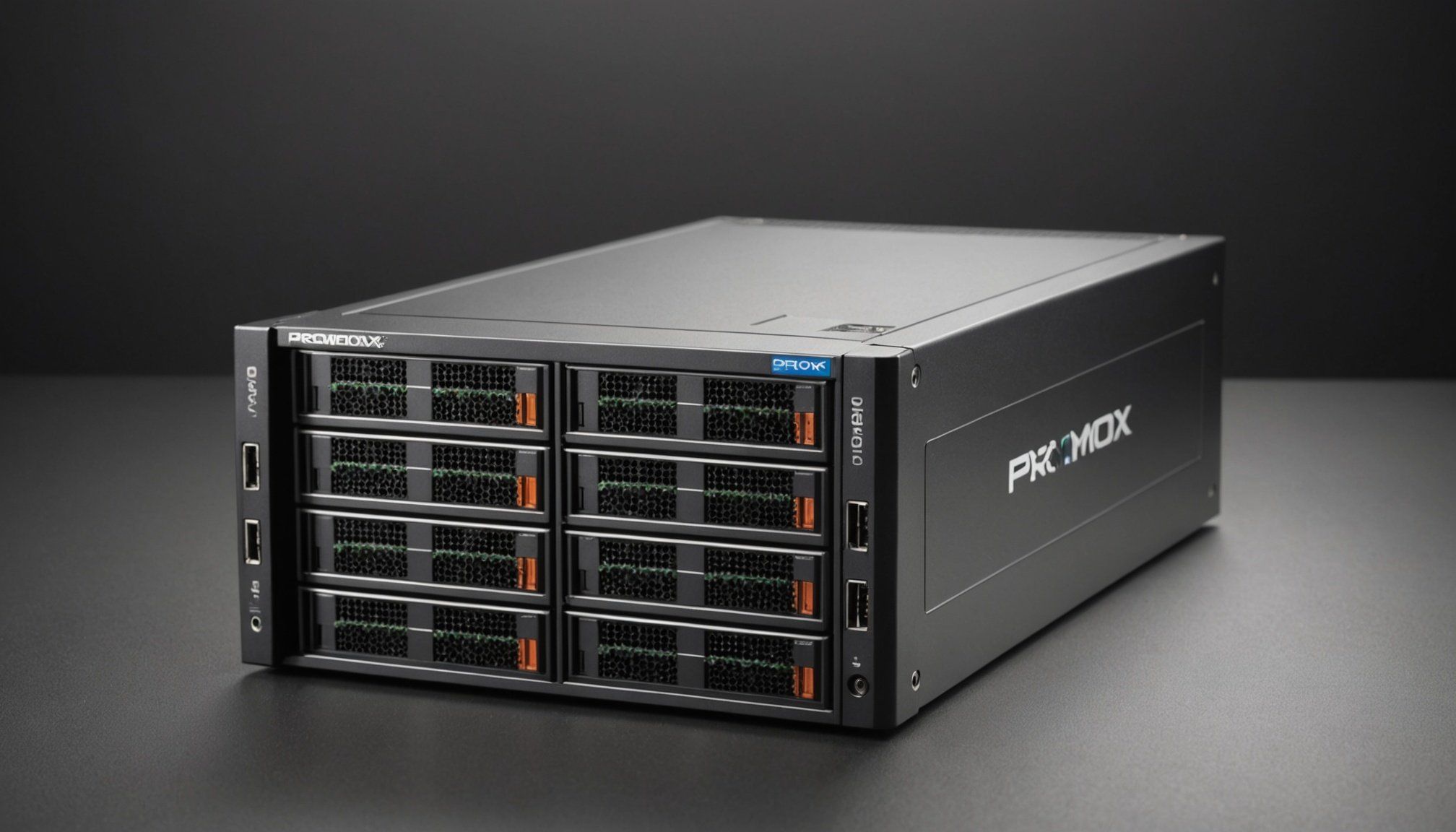Overview of Proxmox VE
Proxmox VE is an open-source platform for virtualization, providing a powerful and flexible solution for managing virtual machines and containers. Virtualization, the cornerstone of modern IT infrastructure, allows multiple virtual servers to run on a single physical server, enhancing resource utilization and reducing operational costs. Proxmox VE is highly regarded in the virtualization space for its robust capabilities and ease of use.
One of the primary benefits of using Proxmox VE for VPS setups is its comprehensive feature set that supports both KVM for virtual machines and LXC for containers. This dual support offers users more flexibility in deploying and managing various workloads. Moreover, Proxmox VE simplifies virtualization management with an intuitive web-based interface, allowing administrators to easily oversee their entire infrastructure.
Also to discover : Unlocking safe file sharing: essential strategies for setting up your synology ds220+ with nextcloud
Key features of Proxmox VE include live migration, high availability, and disaster recovery, which ensure minimal downtime and data loss. The platform also integrates seamlessly with storage solutions, providing open-source backup tools for data protection. Furthermore, Proxmox VE’s clustering capability enables IT administrators to manage multiple nodes efficiently, making it suitable for both small businesses and large enterprises. Overall, Proxmox VE is a versatile and cost-effective solution, backed by an active community that continuously contributes to its development and enhancement.
System Requirements and Installation Process
To run Proxmox VE efficiently, understanding the system requirements is crucial. For a smooth experience, your hardware should meet specific minimum specifications: a 64-bit processor, at least 2GB of RAM, and a 20GB hard drive. However, for optimal performance, it’s recommended to have 8GB of RAM or more, alongside a fast SSD for improved storage performance.
This might interest you : Unleash Ultimate Gaming Performance: Boost Your Ryzen 9 5900X and RTX 3090 in a Corsair 5000D Airflow Case
In installing Proxmox VE, begin by downloading the latest ISO from its website. Burn the ISO to a USB drive and boot from it. The installation wizard will guide you through selecting the target hard disk, configuring the network, and setting the root password. These steps ensure that Proxmox is correctly set up with your hardware and networking basics sorted.
After installation, a series of post-installation configuration tasks are required to get the most out of your virtualization environment. This includes updating the system packages for the latest security patches and configuring the network interfaces for optimized connectivity. Configuring a reliable backup strategy at this stage can safeguard your virtual machines against unforeseen data loss. Emphasizing proper configuration can streamline your VPS management journey.
Initial Configuration of Proxmox VE
Once you’ve installed Proxmox VE, its configuration is crucial to ensure optimal performance and usability. This involves appropriately setting up networking and storage, alongside efficiently managing users.
Network Configuration
Begin by defining your network settings to ensure reliable connectivity and efficient data flow. Proxmox VE offers versatile networking options, allowing you to configure interfaces and manage VLANs for enhanced traffic management. You’ll need to set IP addresses, gateway, and DNS correctly to maintain stable network connections.
Storage Configuration
When configuring storage in Proxmox, consider the types of storage solutions available: local disks, Network Attached Storage (NAS), or Storage Area Networks (SAN). Each option presents different benefits depending on your needs. For instance, using LVM can provide flexibility and scalability, essential for managing multiple virtual machines. Configuring reliable storage ensures data integrity and efficient access.
User Management
Effective user management is integral to Proxmox VE administration. Create and manage users by assigning appropriate roles and permissions. Proxmox allows for detailed user control, ensuring that sensitive operations are handled by authorised personnel only. Proper setup of user accounts not only enhances security but also streamlines operational management, allowing for seamless system oversight.
Creating and Managing Virtual Machines
Proxmox VE enables users to seamlessly create and manage virtual machines (VMs), which is essential for efficient VPS management. To create a new VM, navigate to the Proxmox web interface and select “Create VM.” You’ll be prompted to configure various settings, including VM name, operating system type, and resource allocation. Be precise while setting up these configurations, as they are crucial for optimal VM performance.
Best practices in VM management include regularly updating your VMs and optimising resource allocation to meet each workload’s demands. Efficient resource management can significantly impact both performance and cost-effectiveness, ensuring that your infrastructure remains robust and responsive.
Utilising templates can greatly expedite VM deployment. Templates are pre-configured VMs that simplify the cloning process, allowing for rapid scaling and consistency across multiple instances. They are particularly beneficial when deploying similar setups across numerous nodes, saving time and reducing potential errors.
By leveraging these methods, you can enhance your Proxmox VE environment for superior performance and manageability. Effective VM management not only optimises resource usage but also aligns with business goals, facilitating unprecedented control and insight into your computing environment.
Troubleshooting Common Issues
Running into technical issues with Proxmox VE can disrupt your operations, but understanding common problems and their solutions can mitigate downtime. Start by checking your network settings for misconfigurations, as network connectivity is a frequent source of problems. Ensure that IPs, gateways, and DNS settings match your intended networking structure.
When facing performance degradation, examine resource allocation. Insufficient CPU or RAM allocations can severely impact VM performance. Adjusting these settings often resolves sluggishness. Additionally, ensure that your storage configuration is appropriate for your workload; for instance, using faster SSDs can alleviate disk I/O bottlenecks.
For issues stemming from Proxmox updates, verify compatibility with existing configurations and backup systems beforehand. If an update fails, consulting the Proxmox community forums can offer immediate insights and solutions.
If troubleshooting independently doesn’t resolve the problem, Proxmox provides robust support documentation and an active community. These resources, alongside community forums, can provide troubleshooting guides, user insights, and shared experiences to tackle more complex issues. Utilizing these strategies ensures a stable and efficient Proxmox VE environment, keeping your infrastructure running smoothly.
Performance Optimization Strategies
Enhancing the performance of Proxmox VE requires effective optimization strategies, especially focusing on resource allocation. Proper allocation of CPU and memory resources can significantly boost the system’s performance. Begin by assessing the needs of each virtual machine (VM); ensuring adequate CPU cores and RAM are allocated to maintain seamless operations.
Network Optimization Techniques
To ensure optimal performance, refine your network configuration. Start by implementing VLANs to segregate traffic efficiently and reduce network congestion. This approach not only optimizes bandwidth use but also enhances security.
Disk I/O Performance Improvements
Disk I/O performance is critical in virtualization environments. Switching to faster SSDs can noticeably decrease latency and improve data access times compared to traditional HDDs. Additionally, optimizing file systems and employing read/write caching strategies can further enhance disk performance.
Tips for Optimizing CPU and Memory Usage
For CPU optimization, leveraging CPU pinning ensures that VMs have dedicated cores, reducing contention. Memory-wise, use dynamic memory allocation to adjust RAM allocation automatically based on workloads. This flexibility prevents resource wastage and ensures that VMs operate at peak efficiency.
Implementing these optimization strategies not only enhances your Proxmox VE environment but ensures it remains agile and responsive to changing demands, aligning resources with workload requirements effectively.
Examples of Tailored Server Setups
Proxmox VE offers diverse tailored setups for various business needs, showcasing its versatility in real-world applications. Here’s how different organizations have harnessed Proxmox for specific scenarios:
Case Studies of Proxmox VE Implementations
Education Sector: Institutions use Proxmox for virtualization to deploy classroom environments swiftly. Each virtual machine represents a different learning module, offering students isolated and secure spaces for their coursework.
Healthcare: Hospitals use proxmox VE for running medical applications, ensuring high availability with its robust features. This setup provides rapid access to patient data while maintaining compliance with security standards.
Recommended Configurations for Specific Workloads
For database-heavy applications, incorporating SSDs in the storage configuration enhances performance, minimizing latency in data retrieval. Utilizing CPU pinning can ensure dedicated resources to critical database transactions, boosting efficiency.
Customizing Proxmox for VPS Applications
Modern web hosting companies leverage Proxmox VE by deploying virtual machines tailored for diverse client needs. By tuning resource allocations for each VM, they provide optimized environments suitable for both small websites and large-scale e-commerce platforms.
These tailored approaches demonstrate Proxmox VE’s adaptability, making it a formidable choice for diverse IT environments.
Additional Resources and References
For users seeking to maximise their Proxmox VE experience, a wealth of resources and support is available. The official Proxmox VE documentation is a valuable starting point. This comprehensive guide covers everything from installation to advanced configuration, providing in-depth insights into each component of Proxmox VE. Users can easily access this documentation via the Proxmox website, benefiting from clear, step-by-step instructions.
Engaging with the Proxmox community can significantly enhance your understanding and troubleshooting skills. Community forums are active with expert users and developers who share their experiences and solutions. These user groups offer a collaborative environment to ask questions, exchange tips, and learn from the diverse knowledge pool of Proxmox enthusiasts.
For those keen on continuous learning, numerous tutorials and guides are available online. These cover topics such as performance optimization, efficient virtual machine management, and custom server setups. Dedicating time to these resources not only fortifies your Proxmox proficiency but also ensures you stay updated with the latest innovations and best practices. By leveraging these channels, users can confidently navigate and utilise the powerful features of Proxmox VE.











